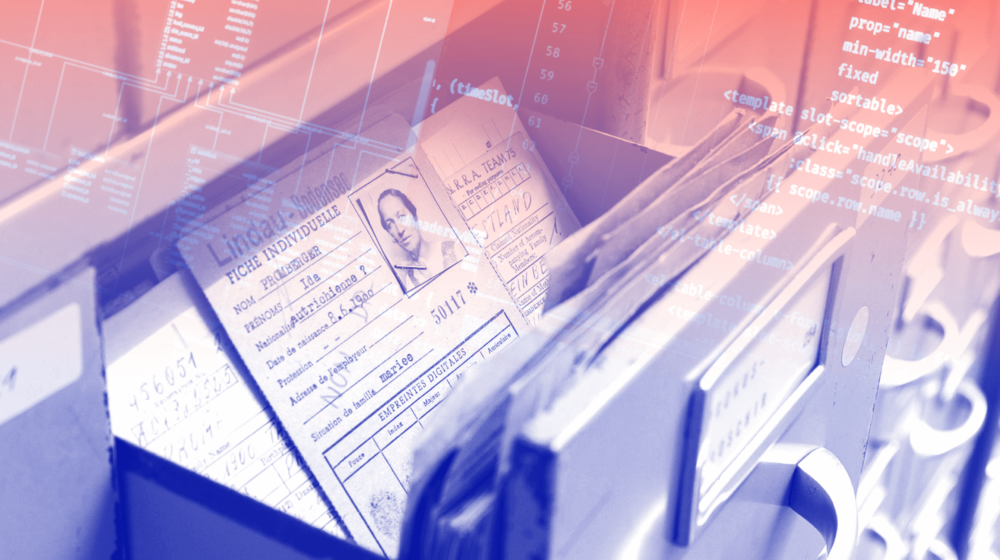Striding towards a digital future

Within the scope of our digital strategy, we achieved another technological milestone in 2020 that brings the future of the Arolsen Archives as an open and accessible archive much closer. With support from our copyholders and the members of the International Commission (IC), we found a new service provider for our database and are now preparing to migrate the data to the future-proof system.
Up until now, we have been using a custom application to manage the approximately 30 million digitized original documents of the Arolsen Archives. The new system needs to be online-based and offer state-of-the-art standard interfaces for better networking and data exchange. This highly complex task is set out in the digital strategy and requires thorough preparation. We involved various partners in the process, including our copyholders and IC members. We chose the data service provider Startext. The Bonn-based company prevailed over six competitors who participated in the call for tenders. It has a proven track record in developing multilingual archiving systems. Startext also employs staff with a background in history.
Progressive and standardized
We are pleased to have made this important decision in cooperation with our partner organizations. “The Arolsen Archives involved external specialists right from the word go,” emphasized Michael R. Levy from the United States Holocaust Memorial Museum, praising the organization’s work on replacing its data management system. “Great importance was placed on integrating the latest technology and a high degree of standardization,” Levy said.
« The Arolsen Archives made every effort to take international requirements into account during the decision-making process. As copyholders, we were closely involved, and our comments were acted upon. »
Michael Lieber, Chief Information Officer, Yad Vashem
A major challenge
Replacing the previous system, which has grown and developed over a number decades, is a major challenge. “We have a very complex document structure,” explains Achim Link, Head of Processes and IT at the Arolsen Archives. At its heart lies the Central Name Index, which contains 45 million documents and was the basic tool used to search for individual people. “Extensive indexing of all our digital documents will make it much simpler to search for information on specific individuals within the enormous volume of data in the future and will significantly improve user-friendliness,” Link continues. “As a result, we will be able to bring all the sources on any single person much closer together.”
Identifying expectations
Transferring this volume of data into a new system with maximum interface capability, optimized search depth, and multiple authorization concepts is a task that will take several years. Anticipating the expectations of different user groups is an important aspect. “Because the digital archive is intended to function across national borders, we also have to ensure that our concepts include the specific requirements of archivists from different countries,” explains Achim Link.
Migration is in progress
In April 2021, we made a start on the first tasks that need to be carried out in order to migrate the data to the new system, such as checking the existing data sets for quality and cleaning up incorrect data. “We are using agile methods, so we are constantly making readjustments in response to requirements as we get closer to implementing the new data system,” explains Achim Link. This work involves a total of 25 internal and external project staff.
Future milestones for coming years will be:
- 2022: Rollout of the new archiving system, operation in parallel with the previous system
- 2023: Complete replacement of the previous system
- 2024: Launch of online-based, interactive, and automated inquiry response system

